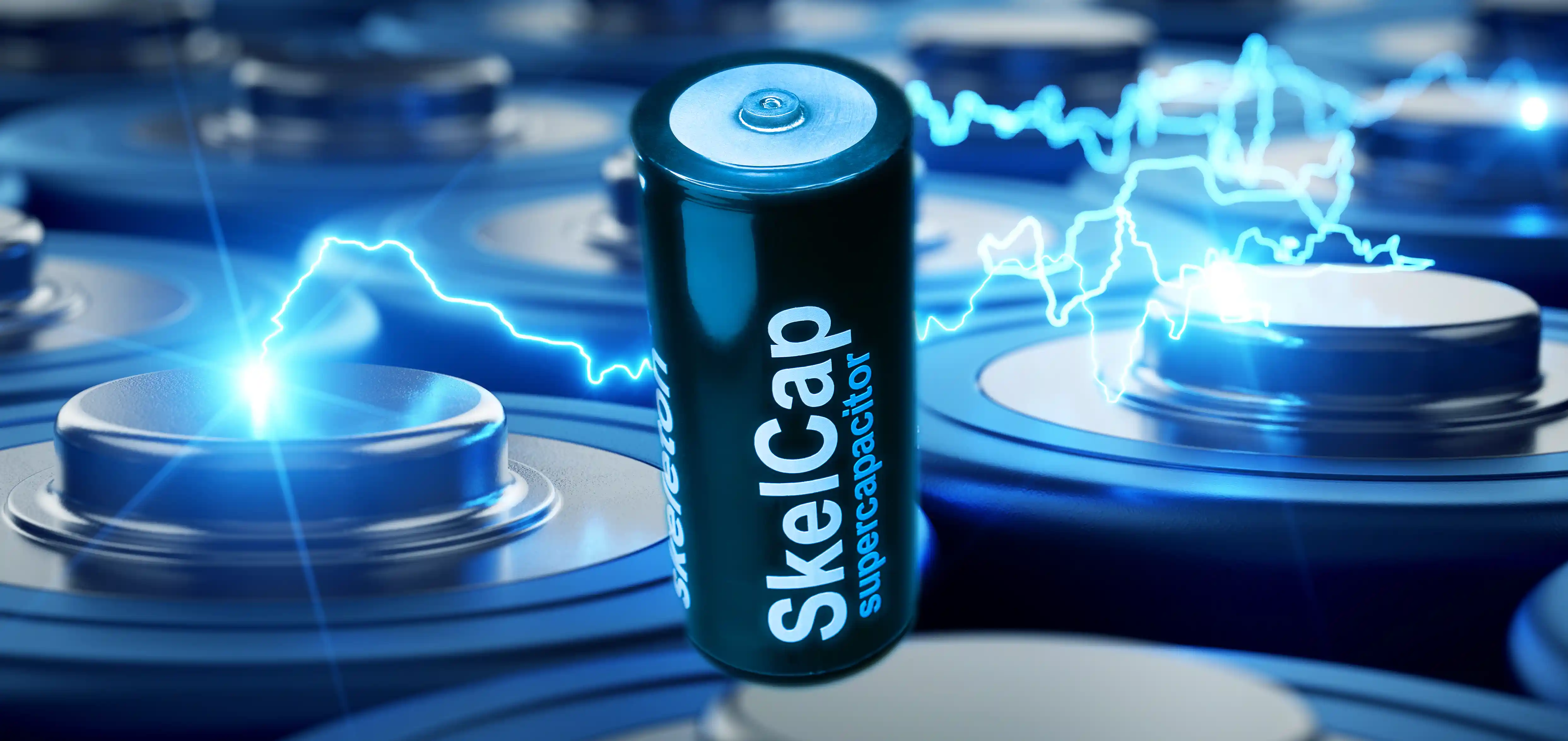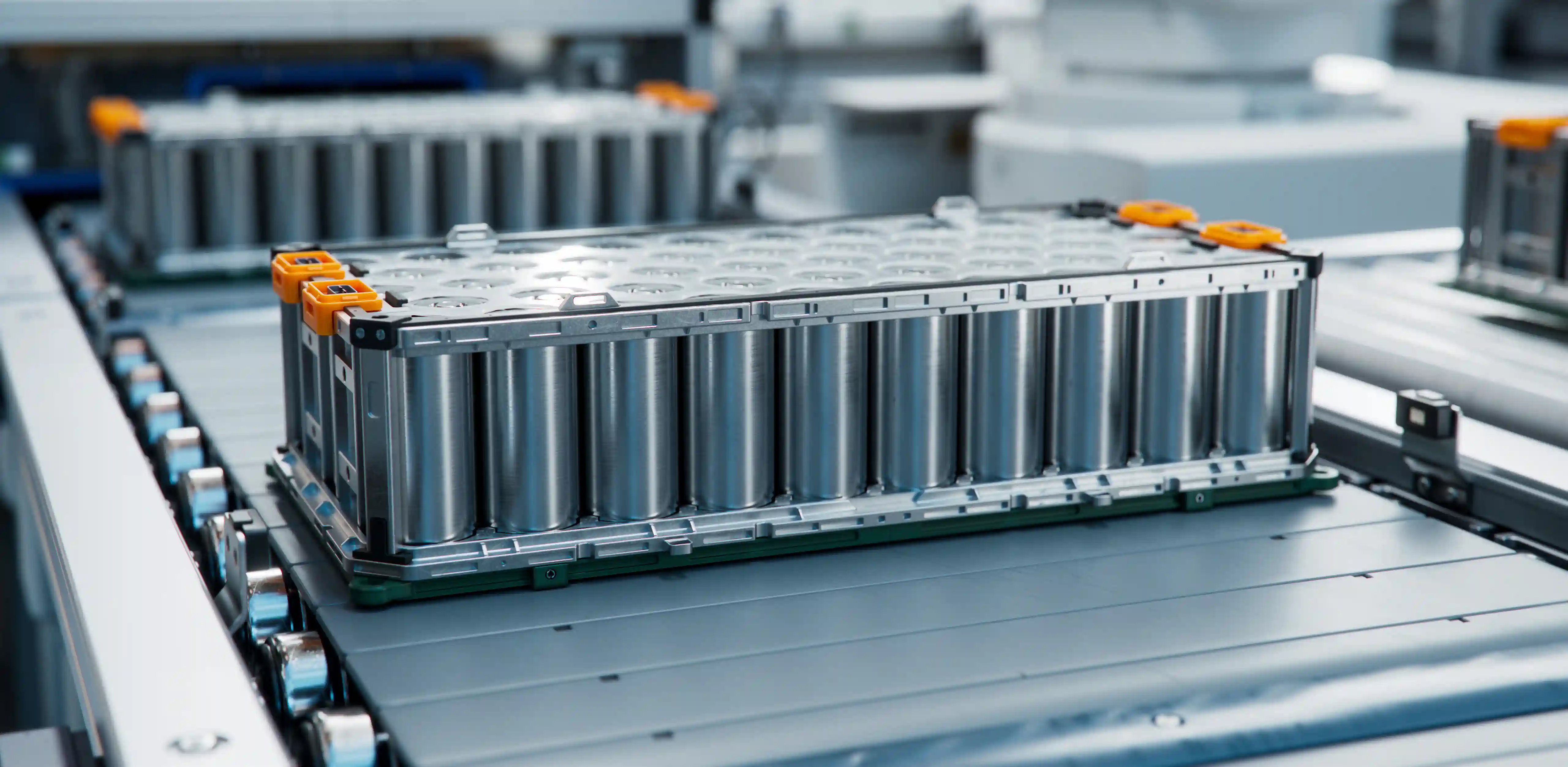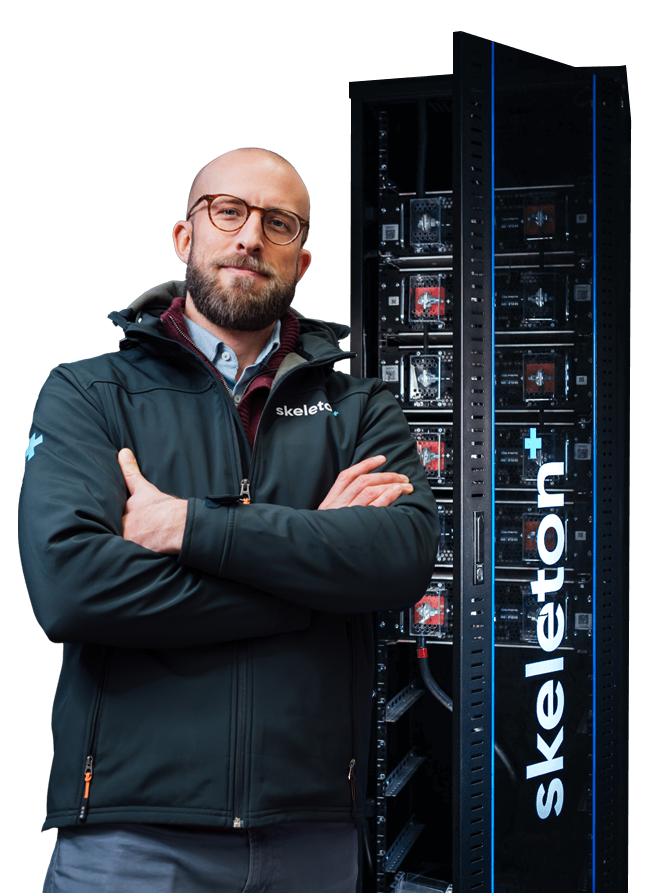Skeleton Technologies, AVL Deutschland and Fraunhofer-Gesellschaft joined forces to explore combinations of lithium-ion batteries and supercapacitors,showcasing enhanced efficiency and longevity in energy storage systems across various applications, from mining trucks and passenger vehicles to industrial machinery.
Lithium-ion batteries (LIB) and supercapacitors (SC) are complementary technologies, yet the widespread adoption of hybrid systems where both LIBs and supercapacitors are coupled in parallel has been stalled. The reason behind this has been the lack of data regarding the costs and benefits of incorporating supercapacitors, compared to a sole LIB-based solution.
The overarching objective has been to open up hybrid battery systems for use in high-power applications, which has previously not been feasible. The consortium developed a software toolbox that can determine the lifetime- and cost-optimal combination of Skeleton’s
supercapacitors and LIBs (e.g., NMC) for a given system design and operational scenario.
The determined combination could then be validated in a scalable demonstrator with real-life data.
• How much will the integration of supercapacitors improve the lifetime of a given battery in a certain application with a specific user behavior?
• How much will it cost?
With a combination of theory (simulation) and experiment (demonstrator), we are now able to answer these key questions for various use cases, system designs and battery technologies, allowing for widespread use of win-win combinations of
supercapacitors and LIBs.
Lithium-ion batteries are currently leading the way when it comes to providing energy over a long period (hours) because of their high energy density. However, LIB systems for applications with high power peaks are often economically disadvantageous because they are either very large or reach the end of their life span very quickly. In such use cases, batteries could be combined with supercapacitors to filter the power peaks out.
It has been qualitatively proven that in such use cases, the combination of batteries and supercapacitors can markedly improve the life span of the system, which decreases the size and thus the cost of the system over the life span (Total Cost of Ownership). However, the necessary tools enabling this optimization by systematically considering all parameters (size, aging behaviour, type of integration, cost) in a quantitative manner were not available.
The aim of this joint research project was therefore to develop the design methods and control algorithms for the cross-application of hybrid energy storage systems (HESS).
The design methods were created to automate individual configurations of supercapacitor-battery-hybrids based on application profiles and considering auxiliary conditions.
The developed control algorithms manage hybrid energy storage systems using application-specific control strategies. Both design methods and control algorithms were then tested in use cases and verified with the demonstrator. Both the demonstrator and the software toolbox were designed flexibly, so that new trends in batteries, supercapacitors and power electronics can be integrated.
Results
Hybrid battery systems appear to be particularly advantageous when they include recuperation (regenerating braking energy), especially in larger energy storage systems with high peak power requirements. For example, a mining truck with 700 kW power compared to a telehandler with 75 kW demonstrates this well. The mining truck requires slightly less than 10 times the peak power of the telehandler. However, it is not nearly 10 times larger in size. Here, the advantage of the high-power density of supercapacitors (>10 kW/kg and >12 kW/L) is a very promising solution.
In a mining truck, a battery lifetime extension of more than 20% by a hybrid system compared to a standalone battery at a competitive system cost was demonstrated. By decreasing electrical losses by 6% and thermal losses by 10%, the overall system efficiency increases significantly.
Use Cases considered:
- Passenger car (Peak-shaving and recuperation)
- Mining Truck (Peak-shaving and recuperation)
- Telehandler (Peak-shaving)
- Excavator (Peak-shaving)
Topology considered:
A semi-active topology was used in the SuKoBa project. There are many other options to couple LIBs with SCs, but this specific choice was made to keep the costs of a hybrid storage system as low as possible. In this type of integration, the LIB is connected to the load and the SC is connected behind the DC-DC converter. This allows unrestricted access to the SC because its voltage level is separated from the load by the converter.
Performance and energy results for construction machinery:
| |
Load distribution (%) |
Energy savings (%) |
| |
LIB |
SC |
Electrical |
Thermal |
| Mining Truck |
95 |
5 |
6,23 |
9,96 |
| Excavator |
92,5 |
7,5 |
-1,83 |
9,75 |
| Telehandler |
80 |
20 |
0,92 |
23,63 |
| |
Lifetime extension (%)
|
| Passenger car |
20 |
| Mining Truck |
20,3 |
| Telehandler |
9,5 |
| Excavator |
5,5 |
The economic efficiency assessment took into account the lifetime improvement percentage, along with the costs of the battery system and the supercapacitors. In the assessed use cases, mining trucks achieved the highest efficiency, with LIBs and SCs forming about 90% and 10% of the hybrid energy storage system's total cost. Conversely, despite the significant lifetime enhancement provided by the hybrid system, passenger cars exhibited modest cost effectiveness, attributed to an expense distribution of roughly 30% for LIBs and 70% for SCs.
Project SuKoBa has provided valuable initial R&D insights into the synergistic potential of
supercapacitors and lithium-ion batteries, along with essential tools for assessing this combination. The encouraging results are steering further research towards cost reduction in mining truck applications and contributing to the development of a full hybrid system within the
EuBatIn project, which is currently in the prototype stage.
Consortium
Skeleton Technologies was the consortium leader.
AVL GmbH, headquartered in Graz, Austria, is one of the world's leading mobility technology companies for development, simulation and testing in the automotive industry and other sectors with 11,200 employees in 26 countries and with 45 tech and engineering centers worldwide.
In the SuKoBa consortium, AVL contributed its expertise in the development, optimization and validation of storage systems and application-specific control solutions and is therefore responsible for the control strategy and simulation of the hybrid system using the AVL Cruise M simulation tool.
Fraunhofer-Gesellschaft, based in Germany, is the world’s leading applied research organization with around 30,800 employees, predominantly scientists and engineers.
Technical Contacts:
• Skeleton Technologies: Dr. Philipp Schlee, philipp.schlee@skeletontech.com
• AVL GmbH: M.Sc. Lena Kallis, Lena.Kallis@avl.com
• Fraunhofer IEE: Dr.-Ing. Weiwei Shan, weiwei.shan@iee.fraunhofer.de











